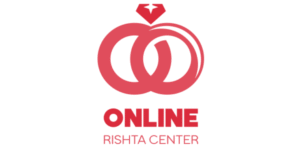In the realm of cryptocurrencies, there are multiple blockchains that contain different projects and tokens, each giving varied chances for users, whether for practical use, amusement, or generating money. However, users sometimes find themselves constrained by the blockchain they are presently on, prohibiting them from accessing possibilities on other blockchains. This is where Rubik.exchange comes in, giving a method to effortlessly shift assets from one blockchain to another, allowing cross-chain trade and transactions. In this post, we will cover the characteristics and benefits of Rubik.exchange, and how it may simplify the cryptocurrency experience for users who operate on various blockchains.
The Challenge of Cross-Chain Transactions:
As the bitcoin ecosystem continues to expand, users frequently find themselves constrained by the blockchain they are presently on. For example, a user on the Ethereum blockchain may desire to engage in a trade or transaction on the Binance Smart Chain or the Matic/Polygon network, but experience issues in moving their assets across other blockchains. This might restrict their capacity to access new prospects and take benefit of the burgeoning bitcoin sector. Additionally, the intricate process of moving assets across blockchains may be time-consuming, tedious, and may need technical skill, making it difficult for less experienced users to traverse.
Introducing Rubik.exchange:
Rubik.exchange is a multi-chain DeFi platform that attempts to simplify the process of cross-chain transactions, enabling users to effortlessly shift assets from one blockchain to another. Rubik.exchange is given to you by the team behind MyWish, a renowned smart contract platform. With Rubik.exchange, users may transcend the limits of functioning on a single blockchain and uncover new prospects on other blockchains without the need for technical skills or complicated processes.
Features and Benefits of Rubik.exchange:
Rubik.exchange provides various features and perks that make it a desirable platform for customers that operate on several blockchains. Some of the important aspects include:
No need to list tokens: Rubik.exchange enables users to access tokens from multiple blockchains without the necessity for token listing. This implies that users may access a broad selection of tokens and engage in various trades and transactions without having to wait for tokens to be published on the platform.
Regulated broker help: Rubik.exchange seeks to avoid frauds and rogue pools from happening by offering regulated broker support. This offers an extra degree of security and confidence for users, guaranteeing that they may securely engage in cross-chain transactions.
Decentralized OTC platform: Rubik.exchange provides a genuinely decentralized over-the-counter (OTC) platform, enabling users to execute rapid transactions without volume constraints. This allows consumers to swiftly and effectively execute transactions without being hampered by volume constraints.
capacity to conduct crowd sales and public/private deals: Rubik.exchange gives users with the capacity to create crowd sales and public/private deals, thus extending the potential for users to engage in various sorts of transactions and trades.
The RBC Token: A Key Feature of Rubik.exchange:
One of the most intriguing elements of Rubik.exchange is the launch of its own native coin, the RBC token. The RBC token acts as the utility token of the platform and is meant to motivate users to engage in cross-chain transactions on Rubik.exchange. Users that possess and utilise RBC tokens may enjoy perks such as cheaper costs, increased trading limits, and access to unique features and services.
